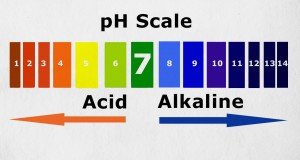The alarming dangers of prehypertension
(NaturalHealth365) Approximately 70 million Americans – one out of three – have high blood pressure, a serious risk factor for cardiovascular disease, kidney disease and stroke. But many more have prehypertension: blood pressure that is higher than “normal,” but that still falls below the measurement of 140 over 90 mmHg – the traditional benchmark of high blood pressure.
The dangers of high blood pressure, or hypertension, are widely known. Less well known, however, are the risks of prehypertension. Due to recent medical research, these are coming into focus – and the picture is troubling.
The hidden (real) dangers of high blood pressure
Because hypertension often carries no visible signs or symptoms as it ravages the body from the inside, it is termed the “silent killer.”
Among the serious problems hypertension can cause is endothelial dysfunction – damage to the linings of arteries. This in turn can cause more high blood pressure, along with diminished circulation, thrombosis (or blood clots) and atherosclerosis. These conditions can set the stage for a life-threatening or fatal heart attack, stroke or cerebral hemorrhage.
Key point: The traditional medical outlook on blood pressure must change
Blood pressure is measured in systolic and diastolic values. The systolic – or top – reading, which reflects the amount of pressure placed on the arteries with each heartbeat, can often predict the likelihood of heart attack and stroke. The diastolic – or bottom — number measures the pressure between beats.
Conventional medicine has always held that blood pressure is not “high,” or worrisome, unless it reaches 140 over 90 mmHg or above – a misperception with tragic consequences. Medical authorities are now beginning to acknowledge that damage to arteries can occur even at lower stages of hypertension. Many point to a target measurement of 115 over 75 – rather than 120 over 80 — as optimal for health.
The truth is: any systolic reading over 120 carries health risks and should be considered “high.”
Where does prehypertension fit in, and why is it dangerous?
In 2003, the Joint National Committee on Prevention, Detection Evaluation and Treatment of High Blood Pressure proposed that blood pressure readings of 120 to 139 over 80 to 89 mmHg be characterized as prehypertension.
According to a scientific review published in 2013 in BioMedCentral Medicine, prehypertension exists in up to 50 percent of people studied worldwide – with devastating consequences.
The researchers reported that the condition raised risk of coronary heart disease by 50 percent, risk of cardiovascular disease by 55 percent and risk of stroke by a stunning 71 percent. Even prehypertension in the “low” range – a systolic reading between 120 and 140 mmHG – caused a 46 percent higher rate of heart disease.
Blood pressure reduction can be a literal lifesaver
Research supports the life-prolonging effects of keeping blood pressure within the optimal range.
According to the Systolic Blood Pressure Intervention Trial, published in 2016 in New England Journal of Medicine, people with systolic blood pressure readings under 120 mmHg had a 43 percent lower risk of dying from cardiovascular disease — and a 38 percent decrease in heart failure rates — compared to people with higher blood pressure.
Reduce or avoid toxic blood pressure medications with healthier lifestyle choices
Simple lifestyle changes can offer substantial benefits when it comes to combating hypertension.
Since blood pressure often increases with excess poundage, maintaining healthy weight can help – with even a modest loss of as little as ten pounds providing benefits.
You can also lower blood pressure by getting adequate exercise, lowering your toxic burden and making sure you consume enough vitamin C – on a daily basis. According to Mayo Clinic, the simple technique of getting sufficient exercise can actually prevent prehypertension from turning into full-blown hypertension – as well as reducing blood pressure that is already north of where you want it to be.
Avoiding toxic trans fats, processed foods and demineralized table salts can also translate to lowered blood pressure. According to the Centers for Disease Control, simply decreasing most commercial salts could reduce hypertension in the United States by as much as 11 million cases. Himalayan sea salt or Celtic sea salt is always a better choice.
Of course, avoiding excessive use of alcohol, and becoming a non-smoker – if you still smoke – are vital when it comes to reducing blood pressure.
More natural solutions for high blood pressure
Omega-3 fatty acids, CoQ10, the mineral potassium and the amino acid arginine have been shown to help reduce blood pressure safely and effectively. You can increase your intake through proper nutrition, or your naturopathic physician can help you tailor a supplementary regime that is right for you.
Don’t forget about the role of stress management in reducing blood pressure. Many effective natural methods exist to reduce stress, including meditation, biofeedback and aromatherapy.
For a soothing massage oil, aromatherapists advise combining 15 milliliters of a carrier oil, such as coconut or olive oil, with 2 drops of lavender oil, 2 drops of sweet marjoram oil, and 1 drop of neroli oil. Smooth over body after a warm bath.
Of course, you should never stop taking blood pressure medicine without consulting your doctor – and discuss techniques for lowering your blood pressure with a knowledgeable holistic physician.
To be completely clear – prehypertension shouldn’t be regarded as a mere “warning signal,” akin to a yellow traffic light that precedes a red light. Rather, prehypertension needs to be acknowledged and addressed as a dangerous condition in itself, one that has tragically shortened too many lives.
References:
https://www.mayoclinic.org/diseases-conditions/high-blood-pressure/in-depth/high-blood-pressure/art-20046974?pg=2
https://www.lifeextension.com/Magazine/2016/11/Lower-Blood-Pressure-Empowers-Longer-Life/Page-01
https://bmcmedicine.biomedcentral.com/articles/10.1186/1741-7015-11-177











